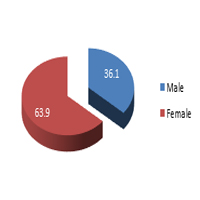Short-term Outcomes of Surgical Treatment of Benign Obstructive Jaundice, Sana'a, Yemen.
محتوى المقالة الرئيسي
الملخص
Background: Obstructive jaundice is among the most challenging conditions managed by general surgeons and significantly contributes to high morbidity and mortality.
Objectives: This study evaluated the short-term outcomes of surgical treatment for benign obstructive jaundice.
Methods: A cross-sectional descriptive study was conducted prospectively at Al-Thawra Modern General Hospital between January 2019 and December 2021, including all patients with benign obstructive jaundice who underwent open surgical treatment.
Results: The study included 36 patients with a median age of 55 years, and female predominance (63.9%) compared with male predominance (36.1%). The most common preoperative diagnosis was common bile duct stones (66.7%), followed by postcholecystectomy biliary strictures (25%). Abdominal pain (91.7%) and jaundice (83.3%) were the most frequent symptoms. Twenty-four patients with CBD stones underwent cholecystectomy with CBD exploration with either T-tube drainage (17 patients) or choledochoduodenostomy drainage (5 patients), and only two patients underwent cholecystostomy tube drainage. However, all 9 patients with postcholecystectomy biliary strictures underwent hepaticoenterostomy drainage procedures. Postoperatively, the median length of hospital stay was 6.33 (2-15) days, and direct bilirubin levels decreased in most patients by the 7th day (88.9%). Wound infection (27.8%), mild pulmonary complications (19.4%), and moderate pulmonary complications requiring ICU admission (13.9%) were the most common complications. No mortality was recorded. Conclusions: Open surgical treatment of benign obstructive jaundice is safe and effective because improved abdominal pain, subsidence of obstructive jaundice features, and postoperative bilirubin level drop were observed in almost all patients. Wound infection and pulmonary complications were the most common complications. Common bile duct stones were the leading cause of this condition, and female preponderance was observed. Future studies should focus on optimizing the management of these patients, including minimizing postoperative complications such as wound infections.
التنزيلات
تفاصيل المقالة

هذا العمل مرخص بموجب Creative Commons Attribution-NonCommercial-NoDerivatives 4.0 International License.

